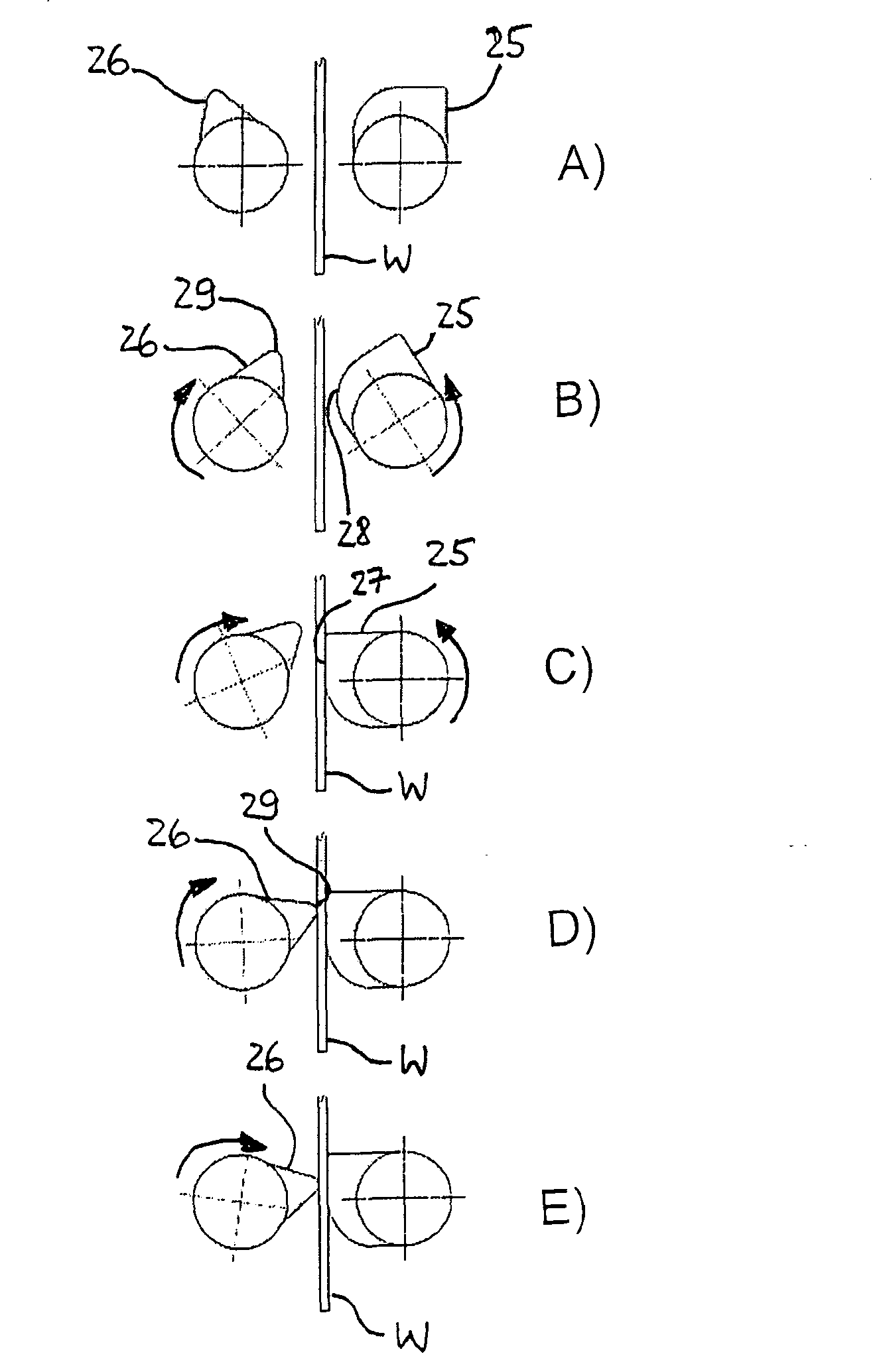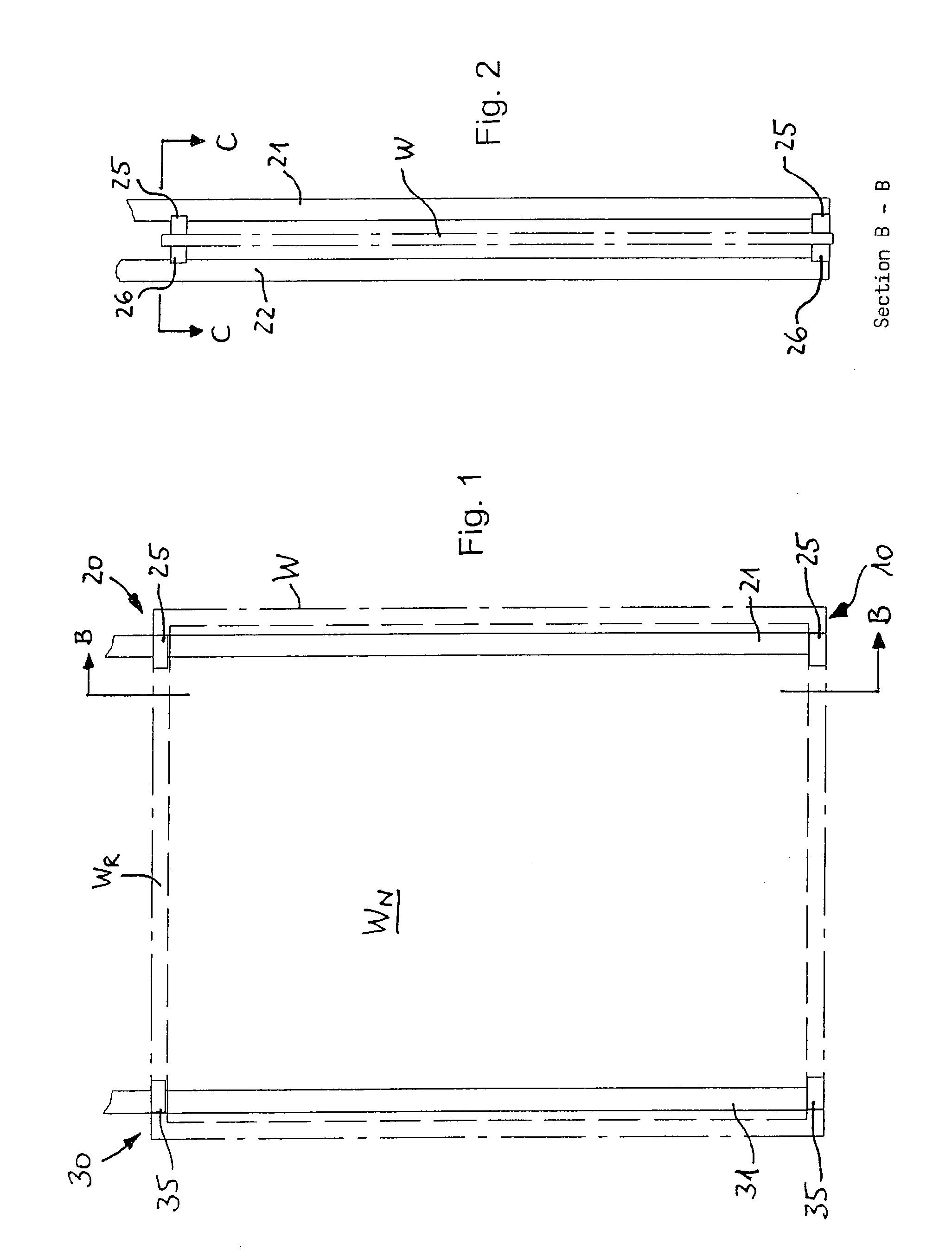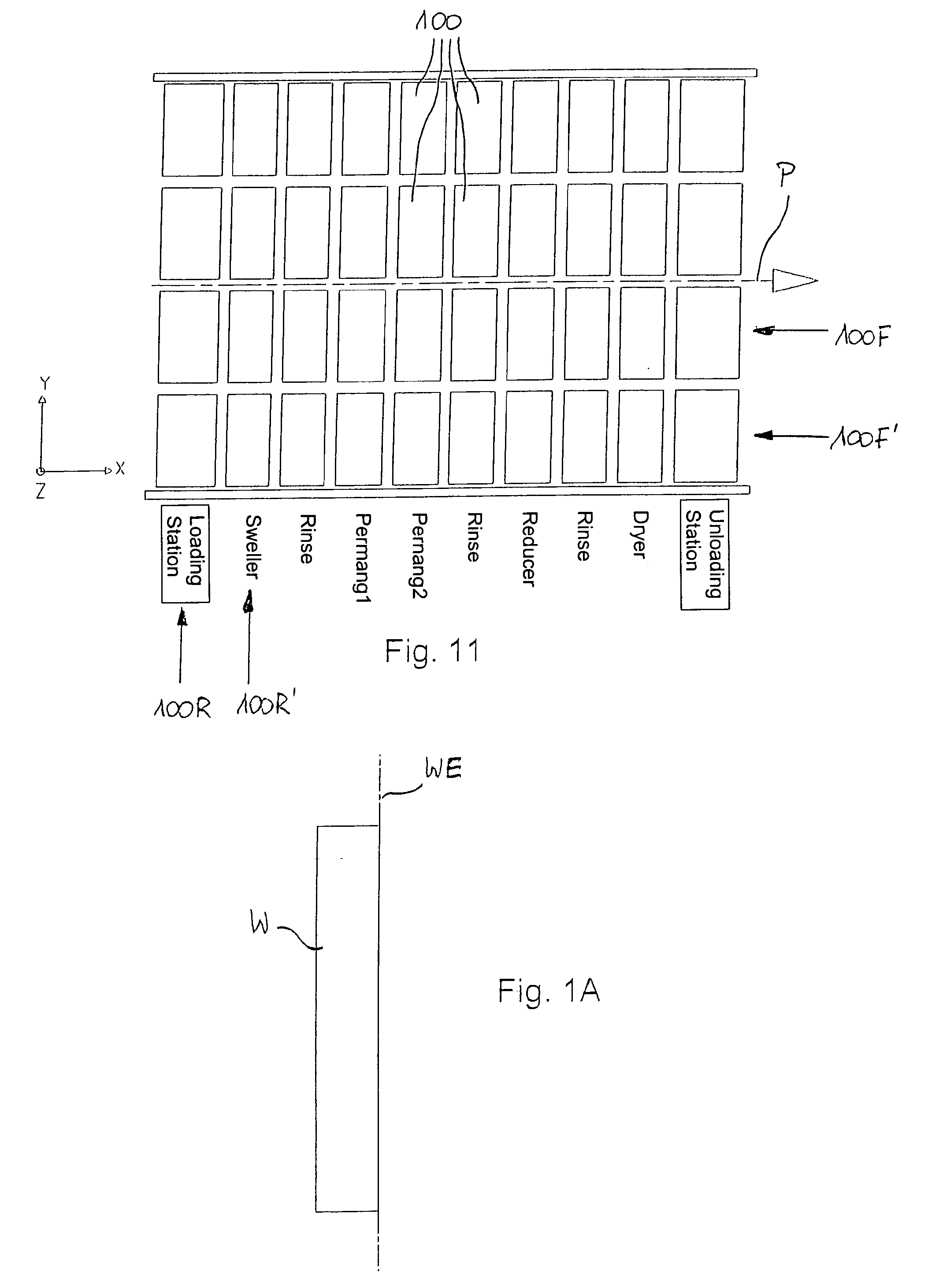Vertical system for the plating treatment of a work piece and method for conveying the work piece
a technology of work piece and vertical system, which is applied in the direction of printed circuit board manufacturer, electronic components, tanks, etc., can solve the problems of insufficient uniformity of metal layer deposited, no longer possible to realise such precision structures, and new challenges for printed circuit board manufacturer with chip-carrier
- Summary
- Abstract
- Description
- Claims
- Application Information
AI Technical Summary
Benefits of technology
Problems solved by technology
Method used
Image
Examples
Embodiment Construction
[0018]These objects are achieved through the system for the plating treatment of a work piece in accordance with claim 1 and through the method for conveying a work piece retained in vertical orientation in accordance with claim 27. Preferred specific embodiments of the invention are specified in the sub claims.
[0019]As far as the term “vertical system” is used in the description below and in the claims, this refers to a treatment system in which work pieces are able to be treated, the said work pieces being substantially in vertical orientation both during the treatment and during transport from one treatment module to another (i.e., in an orientation in which the work pieces are inclined by a maximum of 20° each relative to the perpendicular).
[0020]As far as the term “plating treatment” is used in the description below and in the claims, this refers to a treatment where work pieces are treated by means of liquid or gaseous treatment agents, the work pieces more especially in a pro...
PUM
| Property | Measurement | Unit |
|---|---|---|
| clamping force | aaaaa | aaaaa |
| tension forces | aaaaa | aaaaa |
| angles | aaaaa | aaaaa |
Abstract
Description
Claims
Application Information
 Login to View More
Login to View More - R&D
- Intellectual Property
- Life Sciences
- Materials
- Tech Scout
- Unparalleled Data Quality
- Higher Quality Content
- 60% Fewer Hallucinations
Browse by: Latest US Patents, China's latest patents, Technical Efficacy Thesaurus, Application Domain, Technology Topic, Popular Technical Reports.
© 2025 PatSnap. All rights reserved.Legal|Privacy policy|Modern Slavery Act Transparency Statement|Sitemap|About US| Contact US: help@patsnap.com



